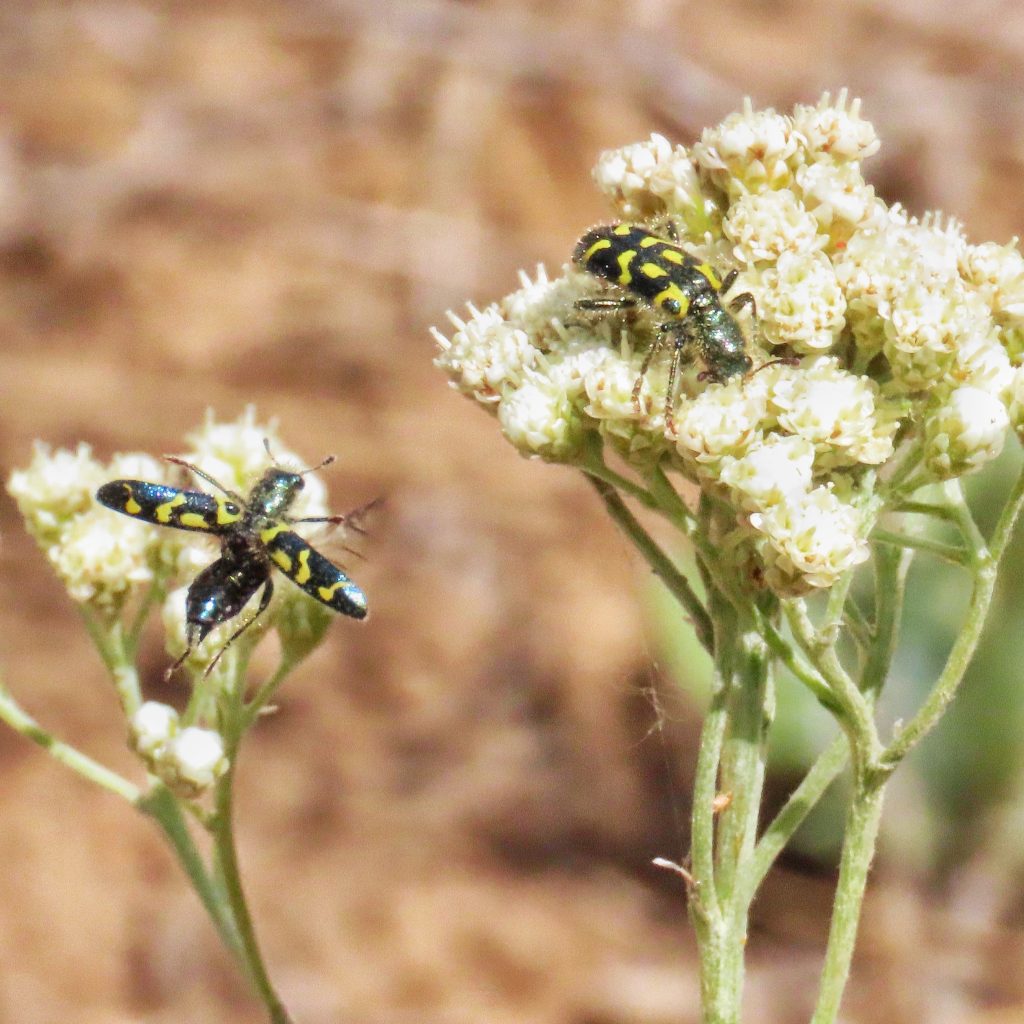
I am very fond of these beetles for a variety of reasons. Not only are they rather beautiful to look at, especially backdropped by white or yellow flowers in direct sunlight, but it is an instantaneous identification. Nothing else in our region has that combination of a blue black body and the dot of ground color peeking out of a basal stripe that trails down the suture of the elytra.
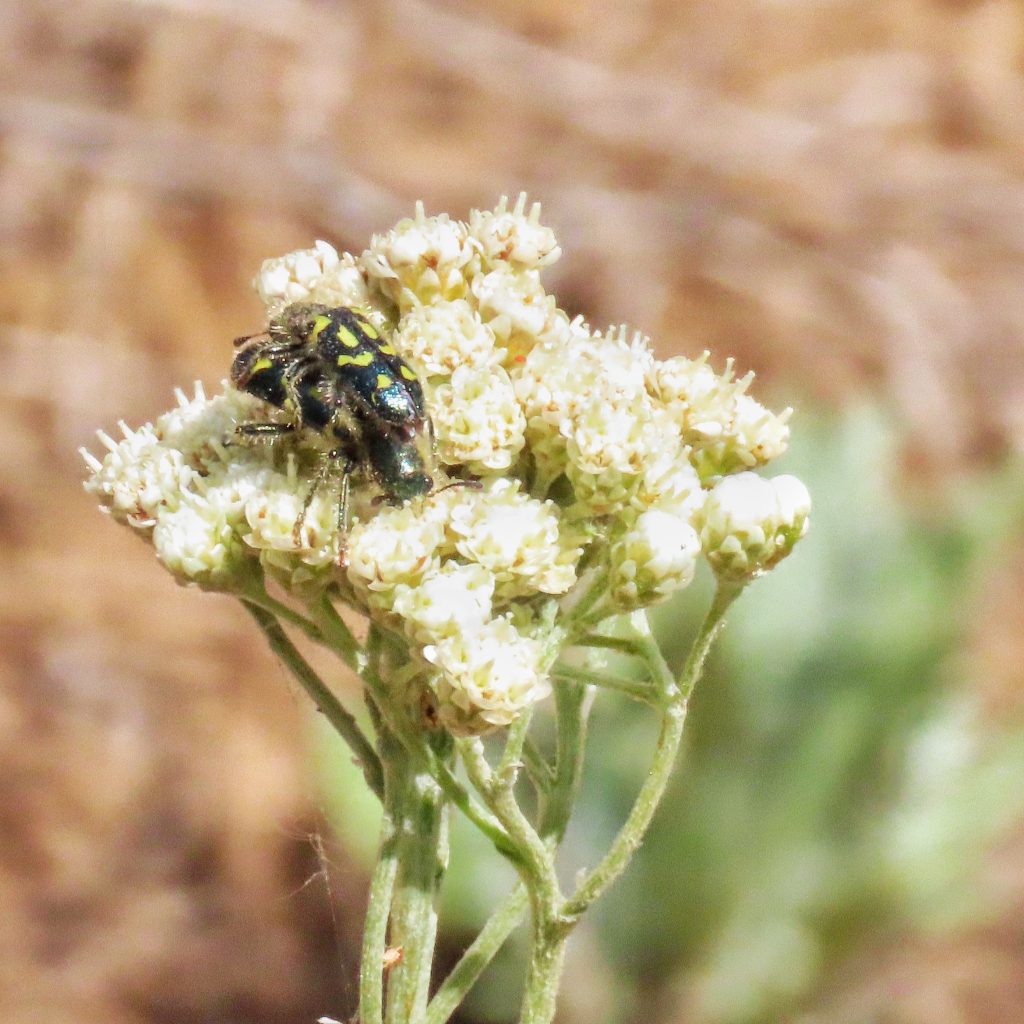
It is also found in a wide variety of environments. The Ornate Checkered Beetles shown here were found along the forested Metolius River, in a clearcut in Cowlitz County, Washington, in a juniper woodland outside Prineville, and in the high desert of the Black Canyon in Wheeler County, Oregon.
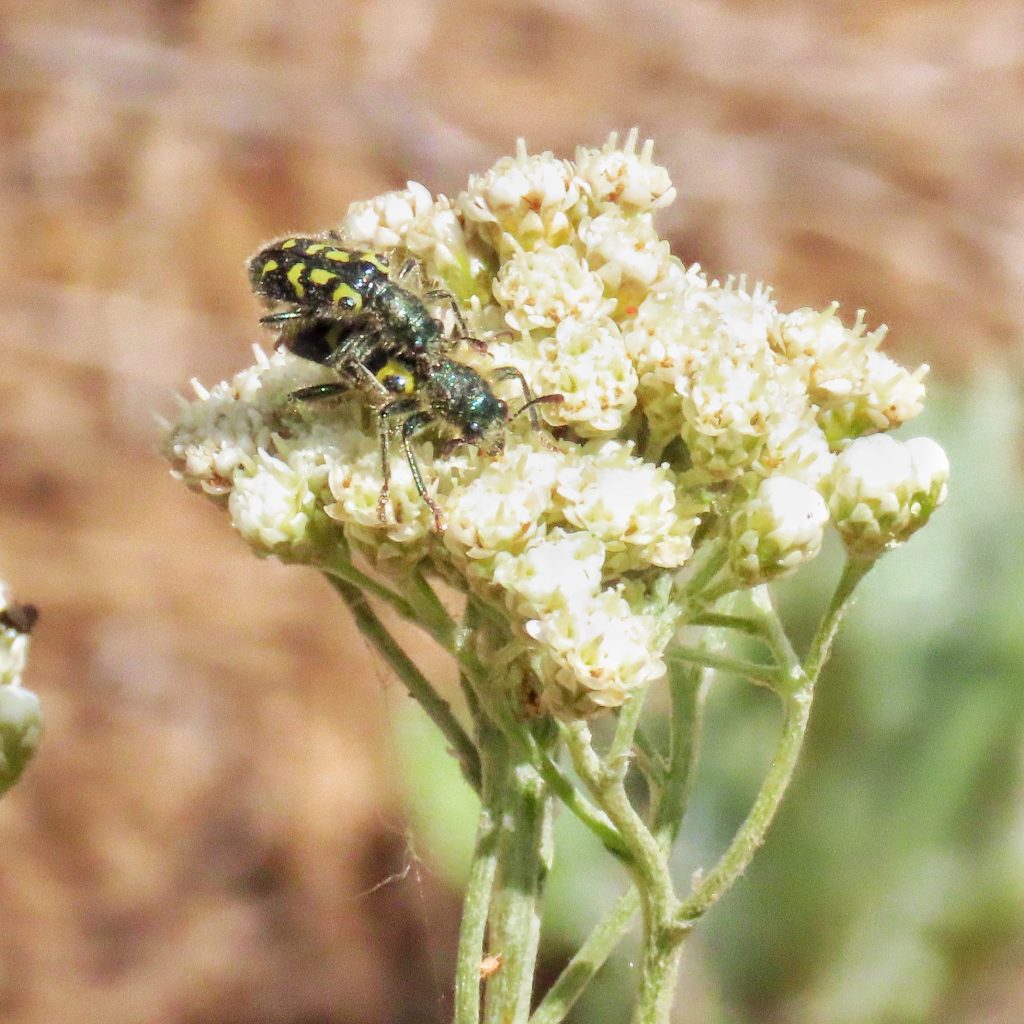
And it has a very interesting life cycle. Trichodes ornatus females insert single eggs into the underside of a flower head of any of a number of different species. They are known to feed upon, mate on, and oviposit in the flowers of yarrow (Achillea spp.), sagebrush (Artemesia spp.), asters,(Aster sp.), bee plants (Cleome spp.), fleabane (Erigeron spp.), buckwheats (Eriogonum spp.), prickly pear (Opuntia spp.), cinquefoils (Potentilla spp.), elderberries (Sambucus spp.), groundsels, ragworts (Senecio spp.), globemallows (Sphaeralcea spp.), tamarisk (Tamarix spp.), and yucca (Yucca spp.), as well as a number of other species. After 18-20 days the larvae hatch, and it gets interesting.
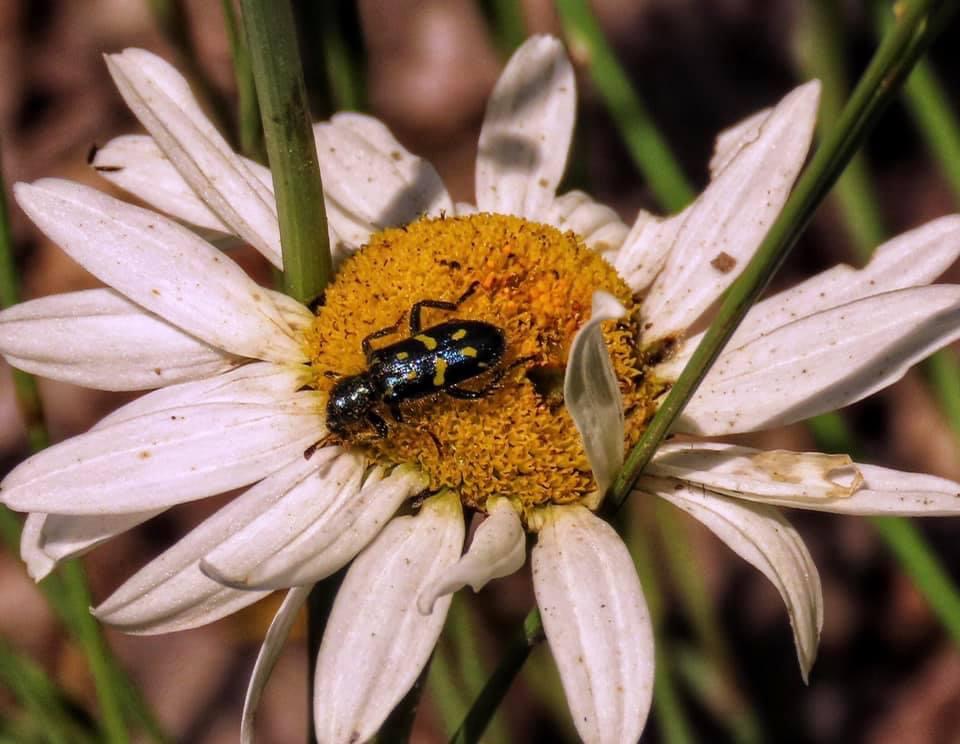
The newly hatched larvae attaches itself to the leg of a visiting hymenopteran, usually something in the family Megachilidae (leafcutter bees), although members of the subfamily Eumeninae (potter wasps) and other wasps and carpenter bees are also utilized. The beetle larvae is then transported to the hymenopteran’s nest, where it is quiescent, for awhile, waiting for a cell to be filled with an egg and provisions (honey and pollen) for the hymenoptera larvae. It then secretes itself within that cell before it is sealed.
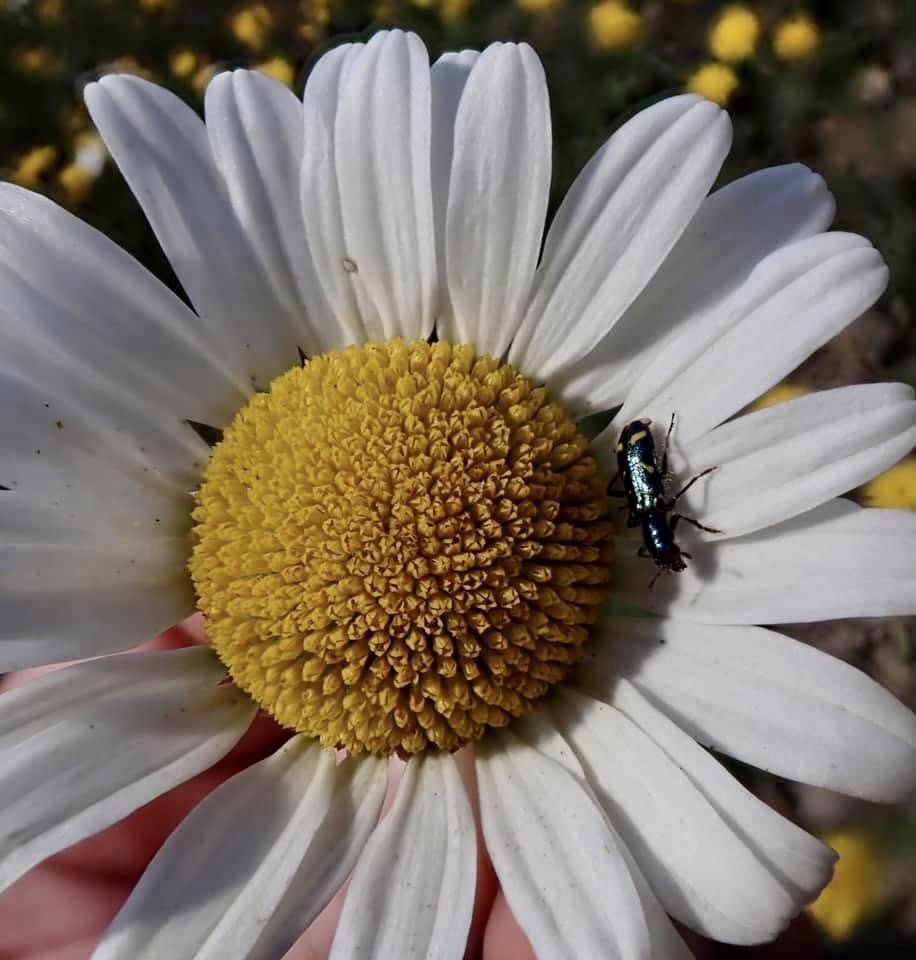
First it eats the provisions meant to nourish the host larvae, then it consumes the host larvae . In the absence of host larvae due to egg failure or other causes, beetle larvae can complete their growth to pupation purely on pollen and honey, but it takes about 3 times as long as it does for those preying on the host larvae, and usually results in stunted growth.
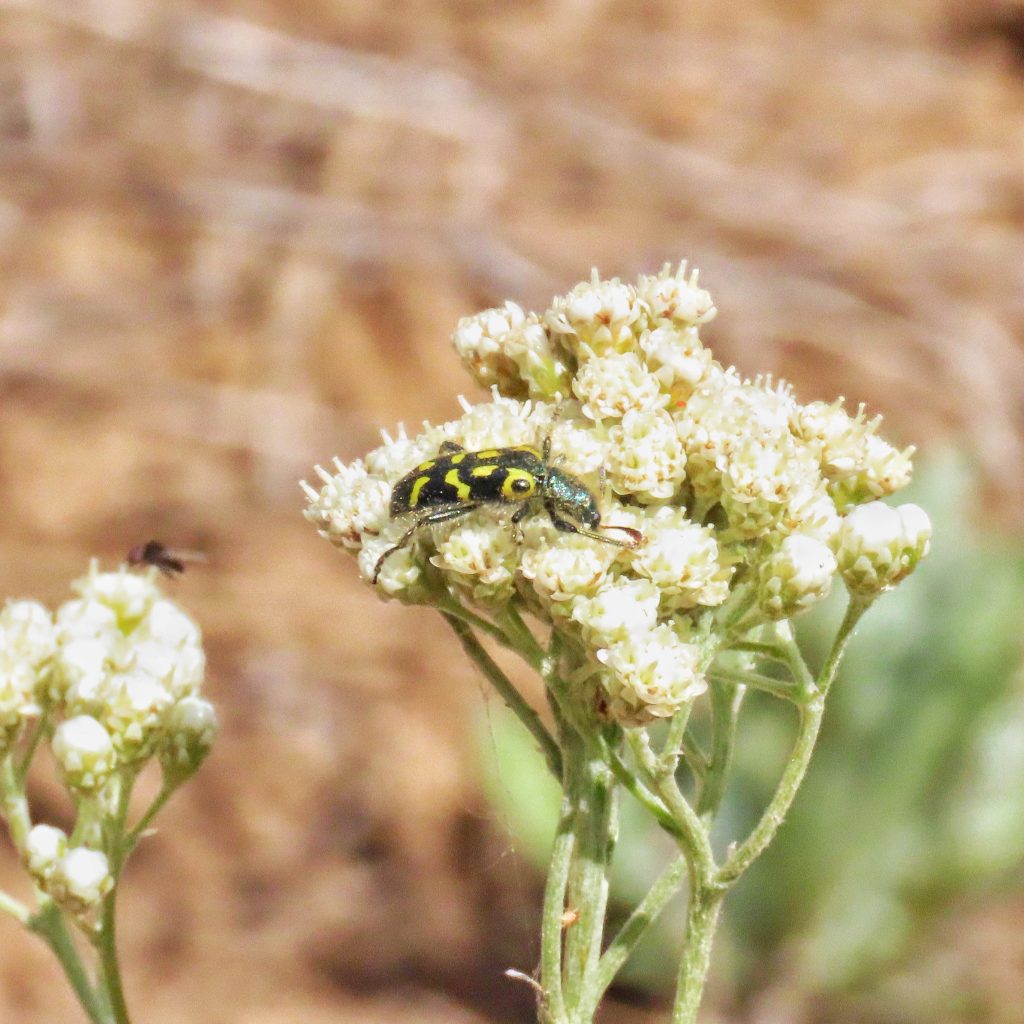
Trichodes ornatus larvae will consume from 1-8 (depending on the size of the host larvae) of their hosts as they pass through the first three instars (an instar is the period between moults in the larval lifecycle of an invertebrate). They do not feed during the fourth instar, during which they excavate a pupal chamber, and overwinter alongside the hymenoptera’s nest. They also don’t feed during the fifth and usually final instar, after which they pupate, to emerge as an adult in 2-3 weeks. In rare instances they may undergo a sixth instar, from which they will pupate in 2-3 years. The first three instars take about 2 weeks apiece, while the forth may last for a few months and includes a period of diapause. The length of the 5th instar seems to be unknown.
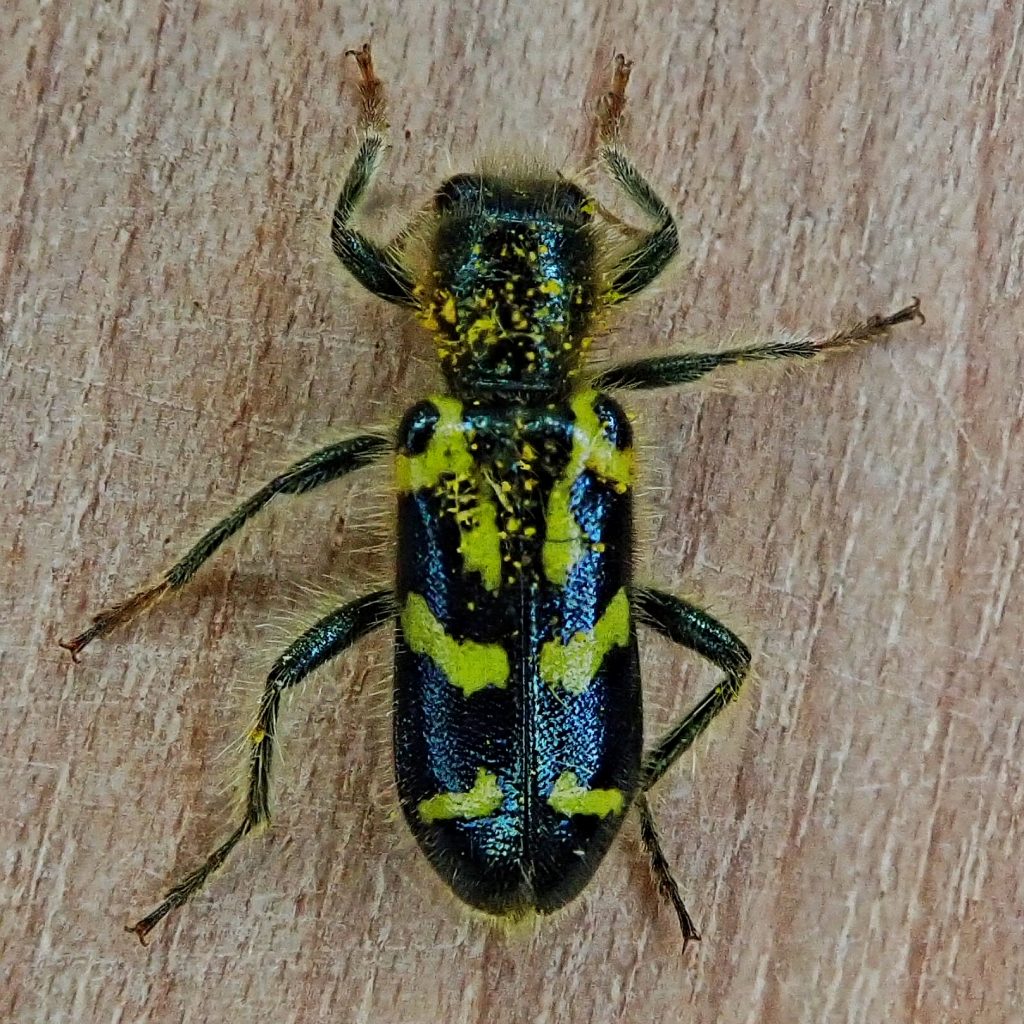
These kind of complicated, parasitic lifestyles always intrigue me. The survival benefit to the beetle is obvious, and I can see how it may have started with a beetle larvae accidentally hitching a ride to a nest, and making the best of it. What I don’t understand is how the instinct to attach to the hymenopteran became hardwired into their circuitry. This is clearly not learned behavior, because there can’t be a teacher.
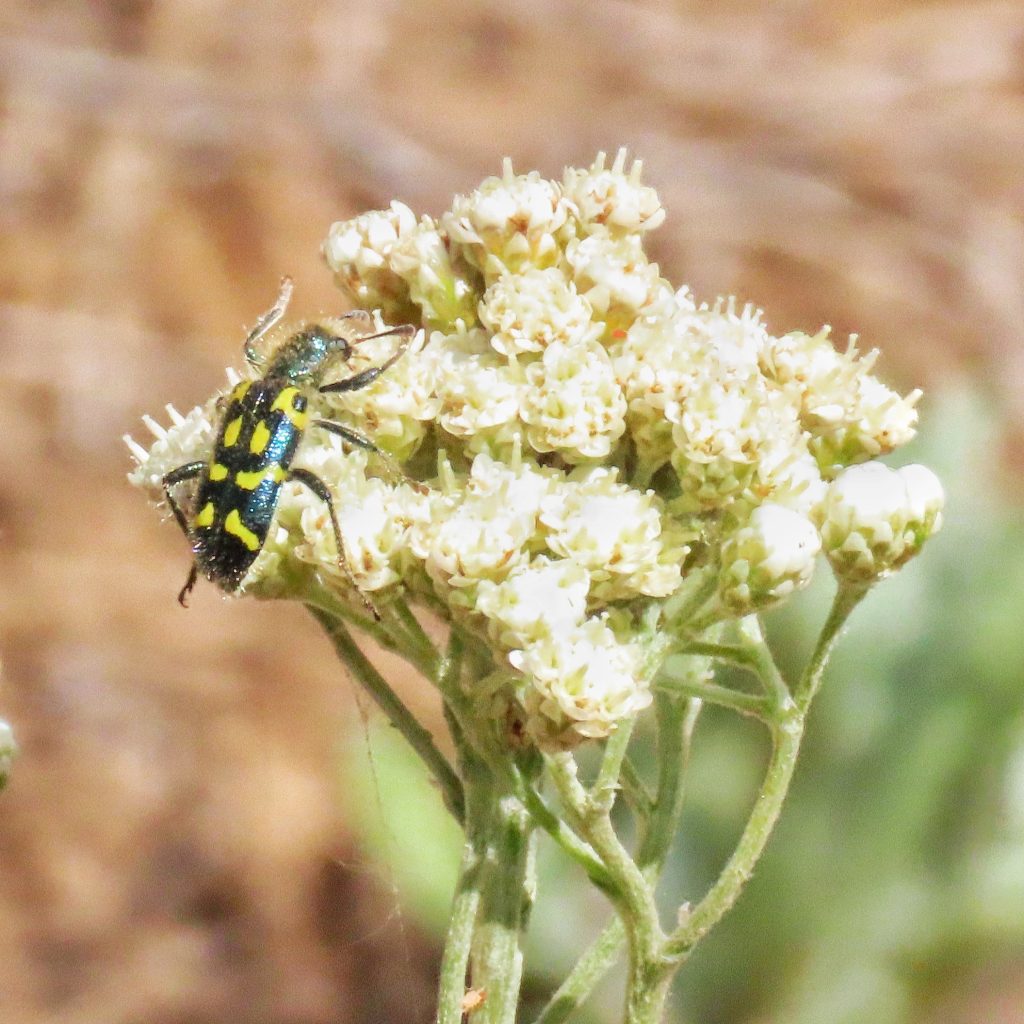
So either there was a change in the neural pathways of that first larvae eating beetle larvae which was somehow passed along genetically, which seems unlikely given what we know about genetics, or there was a genetic anomaly that resulted in a ‘grasping-flying-bugs-when-they-get-close’ instinct, but that seems like it would result in being eaten a fair amount of the time. And do the beetle larvae ever grab onto predators? So many questions, so few answers, and almost none of those answers are definitive.
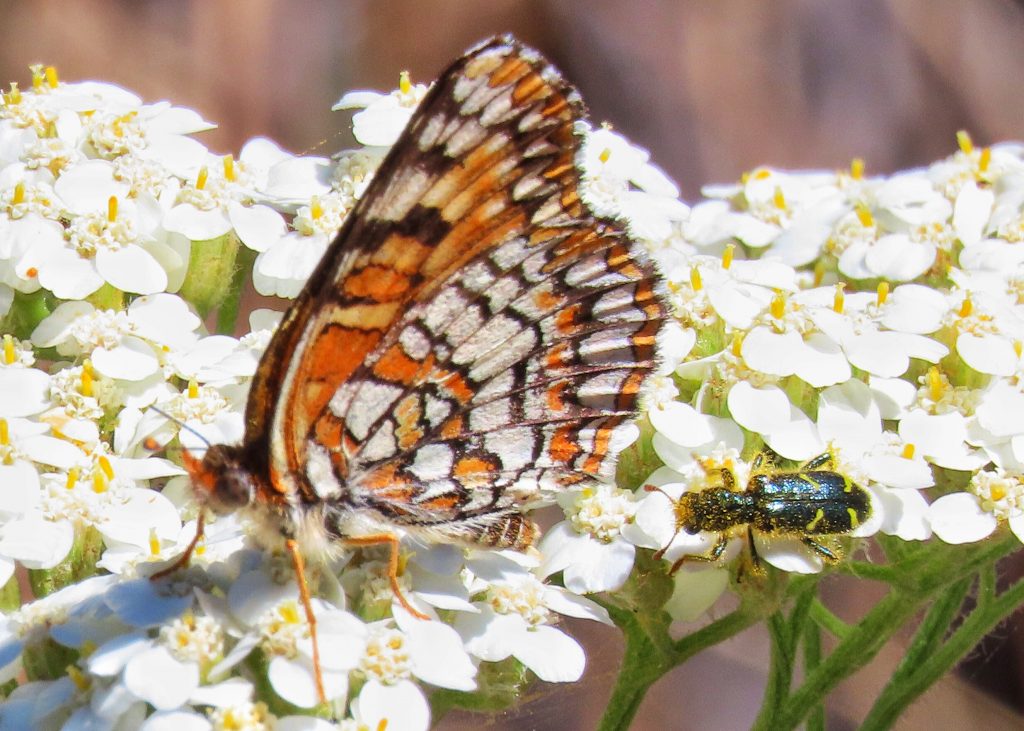
Description-Small to medium sized (5-15mm) blue to black beetle with transverse yellow to red marking; sexually dimorphic as to size, with females much larger; usually has basal, medial, and apical markings, and the basal markings usually trail down the elytral suture, but there is much variation in the extent of the markings; long sparse hairs, especially on the margins; 9-11 antennal segments, last one enlarged into a club.
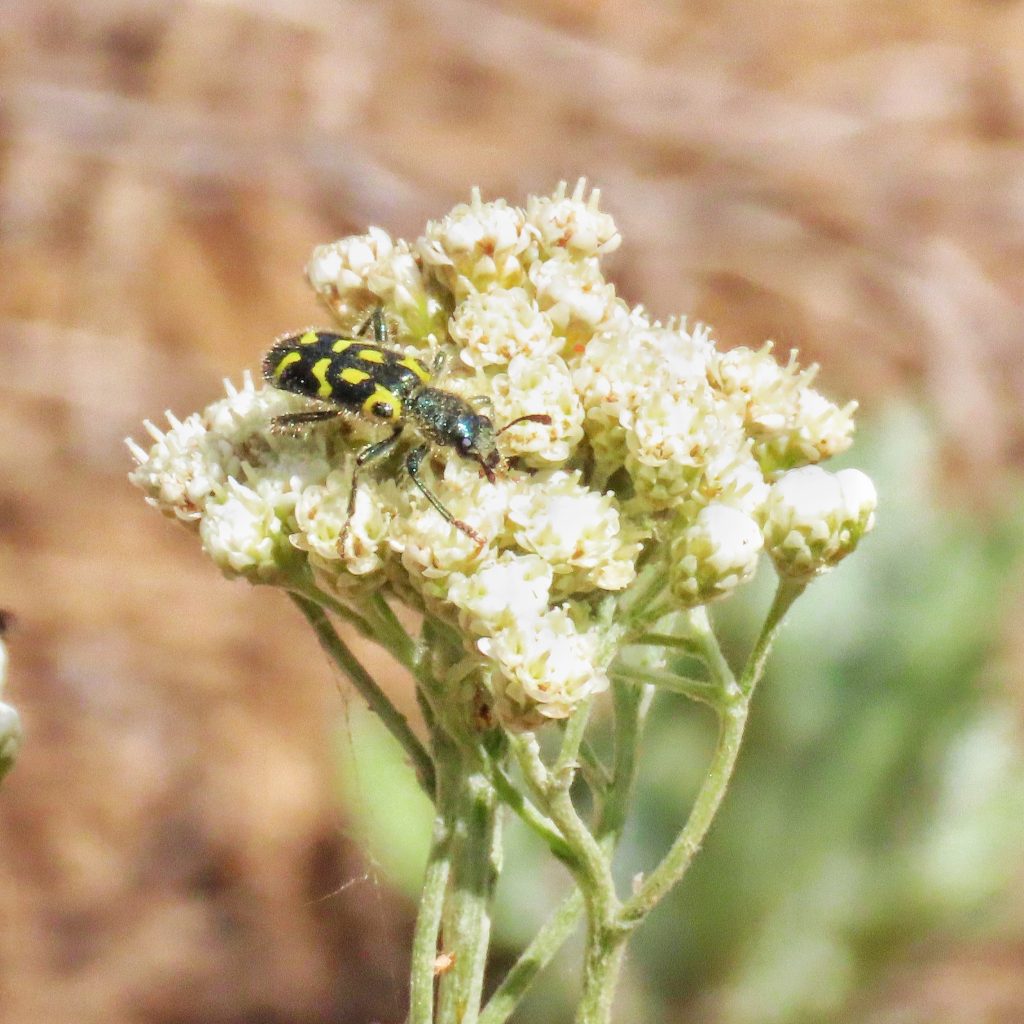
Similar species–Trichodes oregonensis markings are much reduced in size, and it’s only found in sw Oregon/nw California; T. nuttalli basal markings do not trail down the elytral suture, it tends to be bluer with redder markings, and it’s only found in s Idaho in our region.
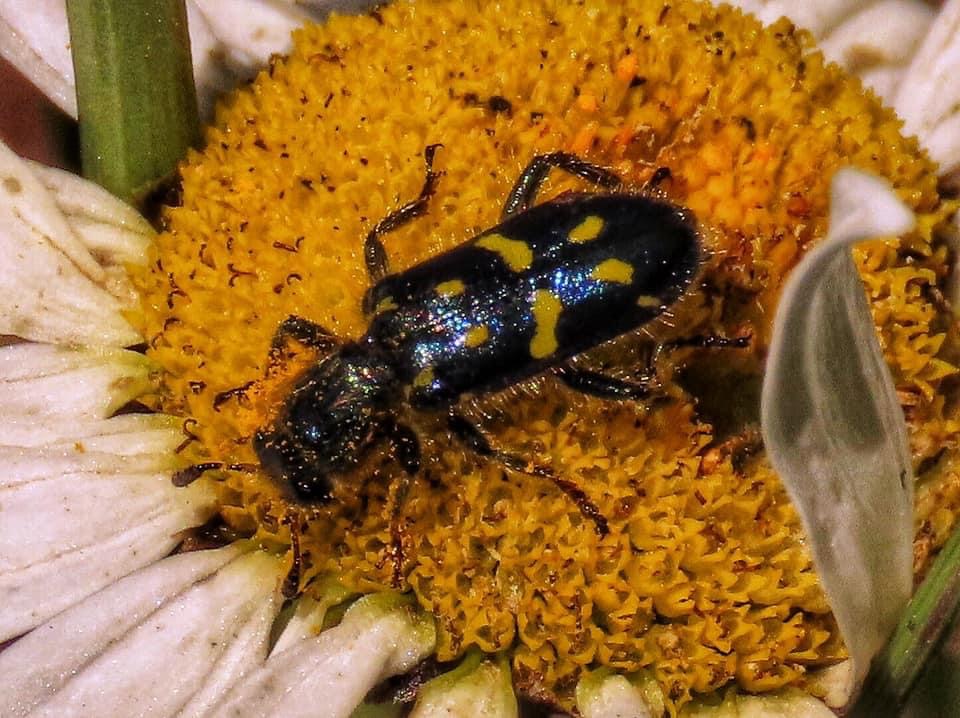
Habitat-Pretty much wherever there are yarrow, asters, fleabane, daisies, buckwheats, cinquefoils, groundsels, elderberries, etc.
Range-Western North America; region wide
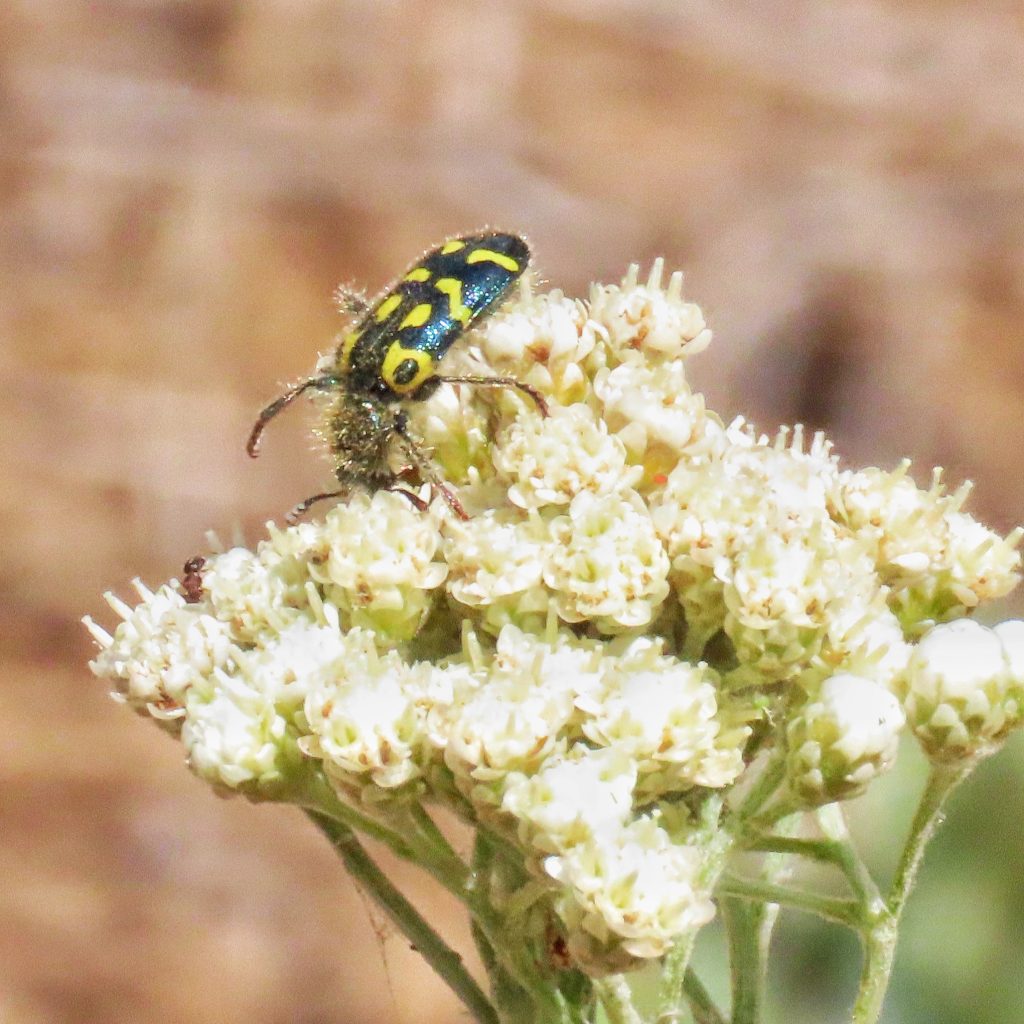
Eats-larvae eat pollen and bee larvae; adults feed on pollen and opportunistically on bees, wasps, beetles, and flies that they encounter at the flowers.
Eaten by-Probably consumed by most insectivores that can subdue it; post coital cannibalism by the females has been reported.
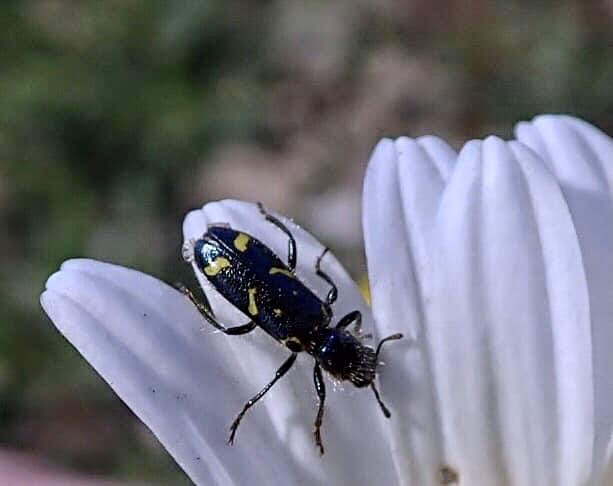
Reproduction-eggs are inserted into the flower heads, hatch in 18-20 days, and the newly hatched larvae attach to bees or wasps; the larvae are transported to the hymenopteran nest, and feed on host larvae; beetle larvae overwinter alongside the bee’s nest in the 4th instar during which they do not feed; they have another non-feeding instar in the early spring, from which they enter pupation; adults may live up to two months.
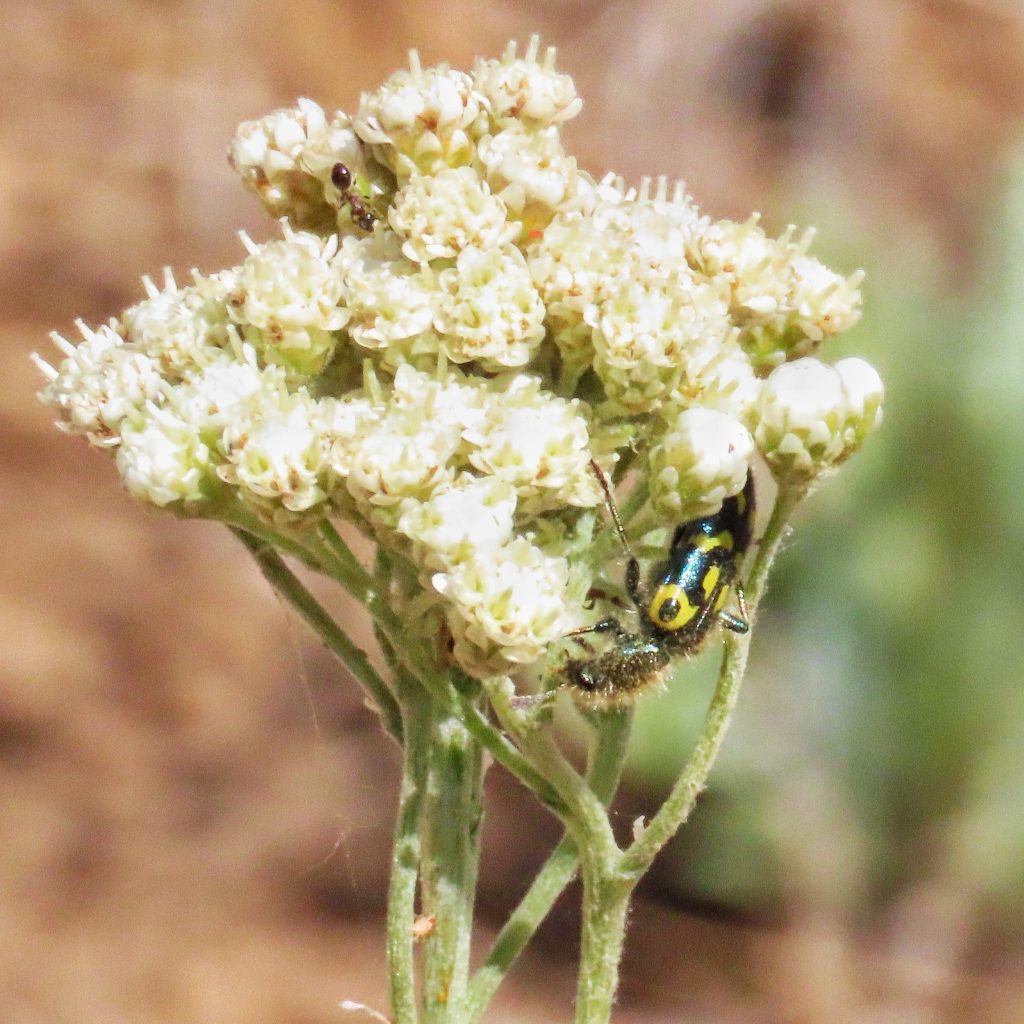
Adults active-Late April into August, depending on latitude and elevation.
Etymology of names–Trichodes is from the Greek for ‘hairy’, and refers to the abundant setae which help make this genus such important pollinators. The specific epithet ornatus means decorated in Latin, and an ornate beetle it is!
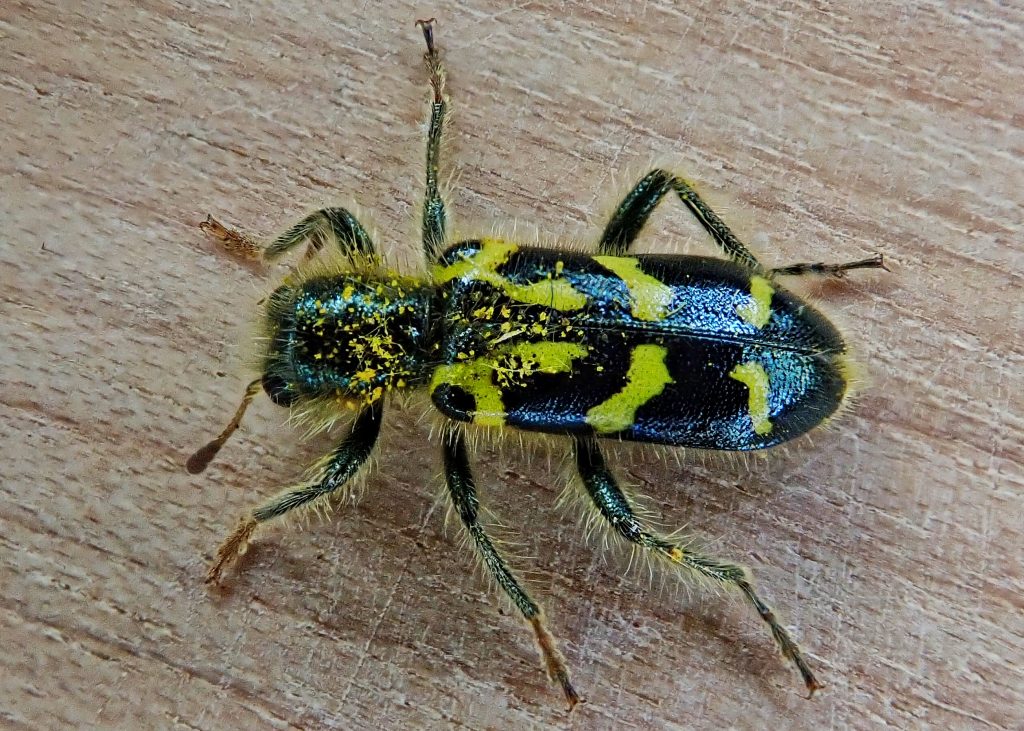
https://digital.library.cornell.edu/catalog/chla5077679_4204_004
https://www.colorado.edu/asmagazine/2018/06/28/ornate-checkered-beetles-eat-bees-and-pollen
https://bugguide.net/node/view/7481
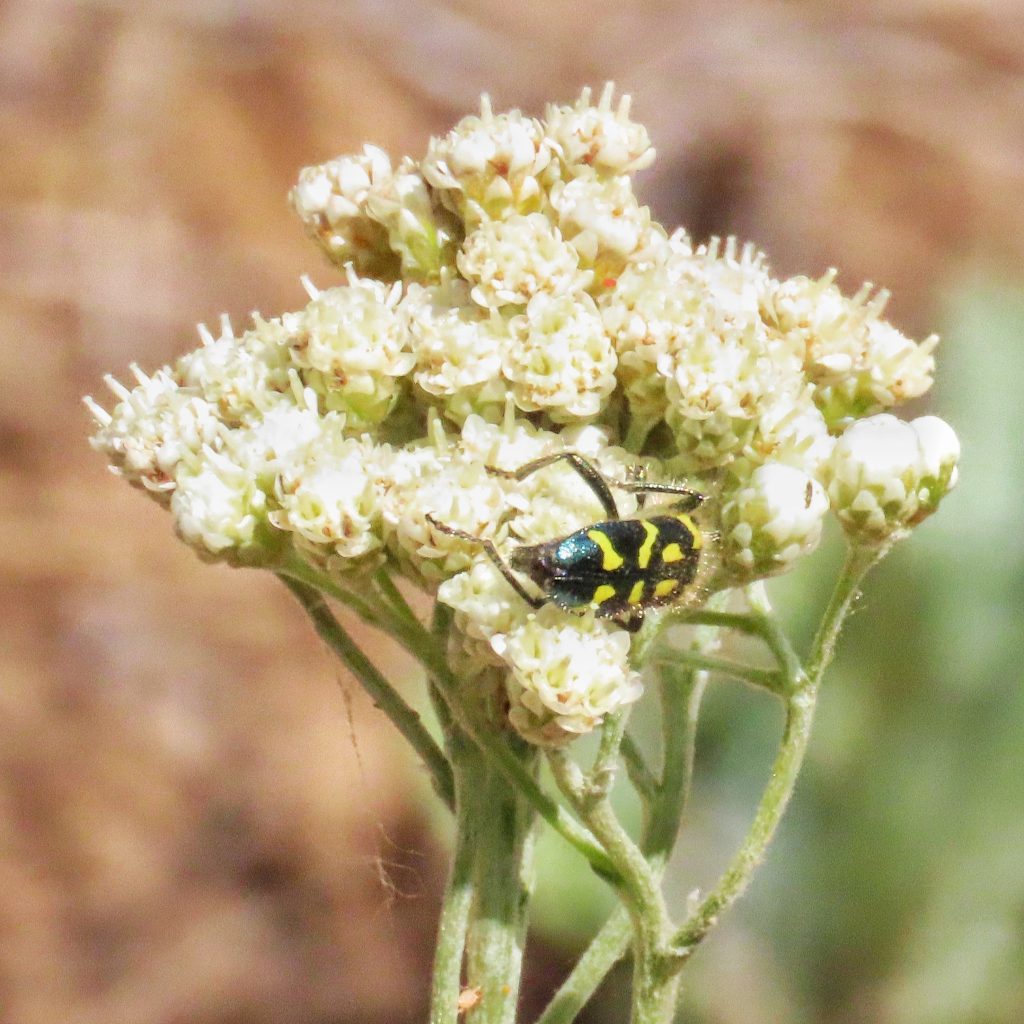
Very interesting story:):) Thanks
Thank you for your thorough description of a complex process. Quite fascinating! Thank you
This beetle is one of the most craziest things I’ve ever seen!
They are certainly wild and wonderful, Jenny!